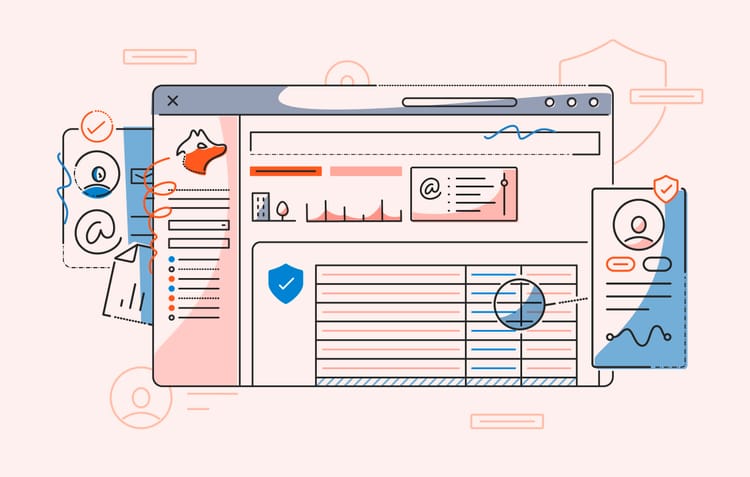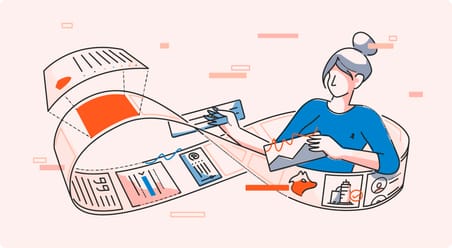3 Psychology-Backed Ways to Get More Email Replies In 2026

If your cold emails aren’t getting replies, you’re not alone.
The average cold email response rate still hovers around 1–3% — but top-performing senders consistently see reply rates above 10%.
The difference? They don’t rely on templates or tricks. They understand how people think.
Decision-makers are flooded with hundreds of emails a day. So how do you make yours the one that actually gets read (and replied to)?
In this post, you’ll learn three psychology-backed principles that can dramatically improve your cold email response rate — and make your outreach stand out in a crowded inbox.
TL;DR - What you can try today
Here’s what you can put into practice right now:
- Give first: Lead with value — share a quick idea, framework, or resource before asking for time. Reciprocity builds trust (and reply rates 3–5x higher).
- Break the pattern: Ditch “Hope this finds you well.” Ask an unexpected question, use humor, or send a short personalized video. Different = noticed.
- Open a loop: Create curiosity by teasing insight (“Most teams make this one mistake…”). The brain has to know the answer.
- Combine all three: —Reciprocity, Pattern Interruption, and Curiosity — to make your cold emails stand out, feel human, and earn real replies.
1. Reciprocity — The Give-First Principle That Drives Replies
If you want people to reply to your emails, start by giving before you ask.
This principle of reciprocity — proven by psychologist Robert Cialdini — shows that when someone gives you something of value, you feel naturally inclined to give back.
That’s why the best-performing cold emails lead with value, not a request.
In 2022, blasting hundreds of cold emails a week was the norm.
The wrong way:
“Can I get 15 minutes of your time?”
It’s self-serving and easy to ignore.
The right way:
“I noticed X about your business. Here’s a framework that helped similar companies solve it.”
You’re sharing something useful. The recipient feels the need to respond.
Why that works:
- Builds trust before any transaction
- Feels helpful, not salesy
- Encourages reciprocity-driven replies
Cold emails that follow the “give-first” approach consistently achieve higher reply rates than those that open with an ask.
💡 Tip: Use tools like Hunter’s Email Verifier and Domain Search to ensure you’re giving value to verified, relevant contacts — not outdated or incorrect ones.
2. Pattern Interruption — How to Make Your Email Stand Out
If you’re wondering why no one replies to your cold emails, here’s one answer:
They look like everyone else’s.
The wrong way:
“Hope this email finds you well.”
“We help companies like yours…”
“Let me know if you’re interested.”
Sound familiar? That’s exactly why they’re ignored.
Our brains are wired to ignore patterns and notice anomalies. When your email looks, reads, or opens differently, it instantly triggers attention.
The right way:
Try these proven ways to interrupt patterns:
- Send a 20-second personalized video instead of another paragraph.
Use humor (sparingly):
“If this is your third email today about lead data… at least this one’s verified.”
Reference something ultra-specific:
“I saw your team recently launched in the UK — how’s it going so far?”
Lead with a question they’ve never been asked:
“When was the last time you checked your bounce rate?”
Why it works:
- Pattern interruption sparks attention and curiosity
- Personalized details build instant relevance
- Makes your email feel human — not automated
Different = noticed. And noticed = replied to.
💡 Tip: Verified personalization works best. Use Hunter’s Discover tool to find verified decision-makers and tailor each email to their role, company size, or industry.
3. The Curiosity Gap — Opening Loops to Drive Replies
If you want to increase your cold email open and reply rates, start leveraging the curiosity gap — also known as the Zeigarnik Effect.
This psychological principle says that we remember incomplete tasks better than completed ones. In email terms, that means if you open a loop without closing it, your recipient’s brain needs closure.
The wrong way:
“We can help you book more meetings.”
There’s no reason to care. No intrigue. No “why.”
The right way:
“Most teams make this one mistake with outbound (and you might be too).”
That’s an open loop. The reader has to know what the mistake is.
Why that works:
- Curiosity increases open rates and click-throughs
- Encourages readers to engage to find the answer
- Makes your message conversational, not transactional
Use this sparingly and pair it with personalization — otherwise, it risks sounding clickbait-y.
💡 Tip: Pair a curiosity-based subject line (“You might be missing this in your outreach”) with a data-driven hook in your first sentence to keep attention.
Put It All Together
To improve your cold email reply rates in 2026:
- Give first. Lead with insight or value before asking for anything.
- Break the pattern. Avoid generic openings — sound like a real person.
- Create curiosity. Open a loop that the reader needs to close.
Then, verify your contact data so you’re actually reaching real inboxes.
Bad data = no replies, no matter how good your copy is.
With Hunter’s Starter plan, you can:
- Verify every contact automatically each month
- Sync verified data with CRMs like HubSpot or Pipedrive
- Keep deliverability high and replies consistent
Upgrade and make your next cold email impossible to ignore.



![How Small Teams Running Multichannel Lead Generation in 2026 [Infographic]](/blog/content/images/size/w452/2025/10/Multichannel-infographic-header.png)
 Send cold emails with Hunter
Send cold emails with Hunter